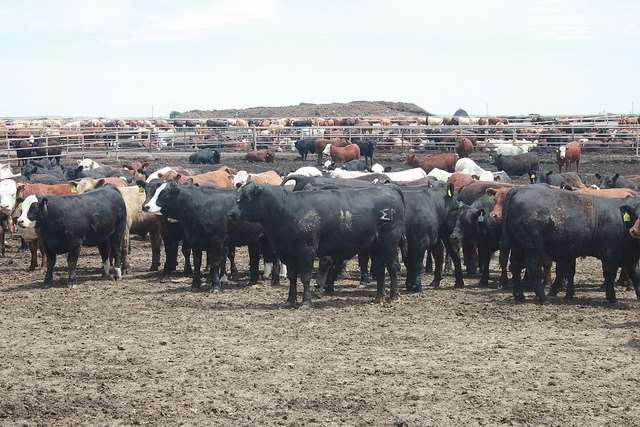
On Friday of last week, the United States Department of Agriculture released its latest cattle on feed report. According to it, placements in the overall cattle inventory seem to be higher than most would have expected. The resulting implications of this, however, seem to be somewhat moderated when compared to the reported marketings. Radio Oklahoma Ag Network Farm Director Ron Hays spoke with Oklahoma State University Livestock Market Economist Dr. Derrell Peel about his reaction to the numbers crunched by USDA. He says on the whole, this report may be viewed, slightly negative.
“The April USDA Cattle on Feed report showed an on-feed inventory fractionally higher than one year ago at 10.9 million head for feedlots over one thousand head capacity,” Peel wrote in his analysis of the report. “Placements were larger than expected at 111 percent of last year and were, in fact the largest March placements in the current data series back to 1996.”
Peel contends that placements often receive the most attention in these monthly reports and may cause some bearish reaction. He says too, that the general idea that placements will grow should not be a surprise, while placements, along with the placement weight breakdown, provide more specific indications of the timing of fed cattle marketings and slaughter in coming months.
“Three years of confirmed herd expansion since 2014, and likely continued expansion in 2017, means that the cattle pipeline is growing, with plentiful feeder cattle supplies headed toward feedlots for months to come. Record March placements are consistent with the fact that the industry is in the first sustained herd expansion since the early 1990s, predating the current data period. However, sometimes it almost seems like increased monthly feedlot placements are viewed as a new source of supply that suddenly materialized and wasn’t already anticipated.”
March marketings were 110 percent of last year. Monthly feedlot marketings often receive little attention, Peel says, being viewed mostly as history by the time the report is released. However, strong marketings since mid-2016 have contributed greatly to the strength of fed cattle markets so far in 2017.
“Smaller carcass weights Aggressive marketings and reduced days on feed have played a part in helping to hold beef production to smaller year over year increases and thus supporting boxed beef and fed cattle markets,” Peel writes. “The cattle industry in general and feedlots in particular have done a good job managing growing cattle supplies for most of the last year. If this continues the industry can do much to minimize the supply pressure coming to bear on cattle markets in the coming months. Given the reality of growing beef production, the bigger key for the foreseeable future is continued strong domestic and export beef demand.”
Click here to see more...